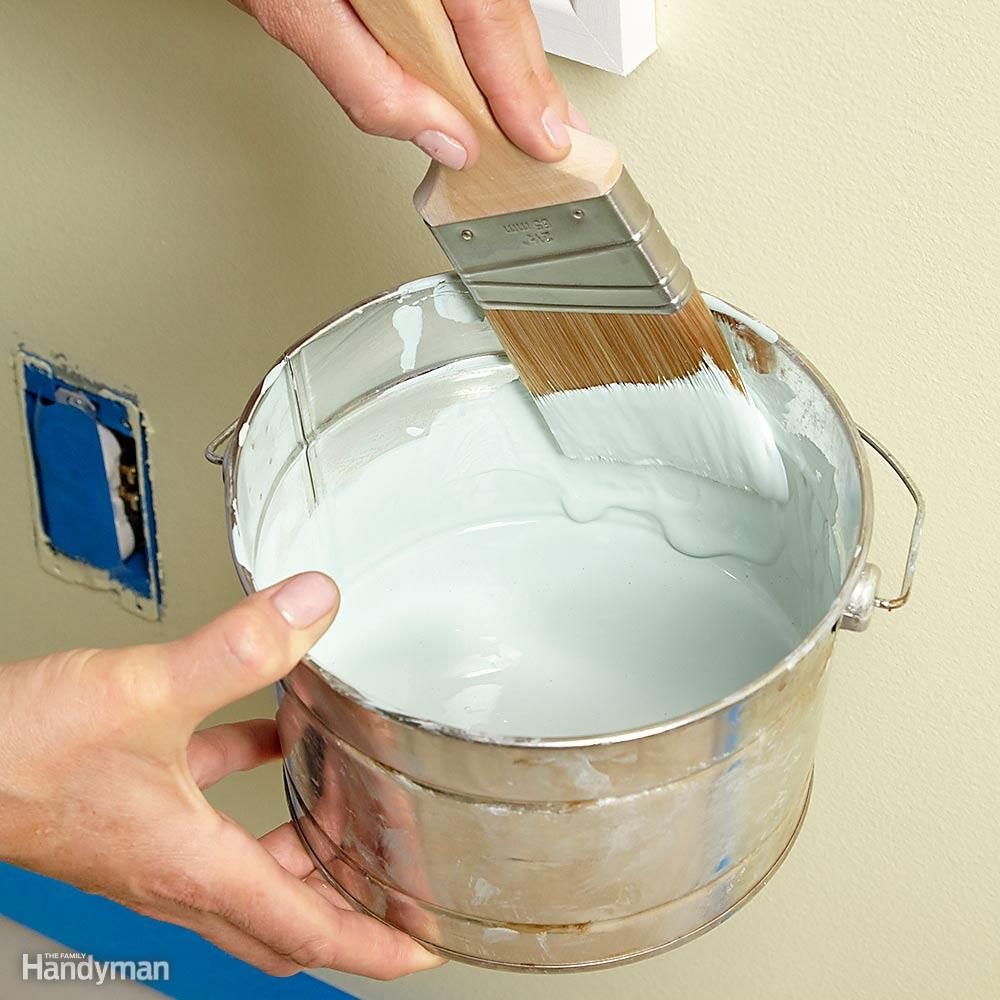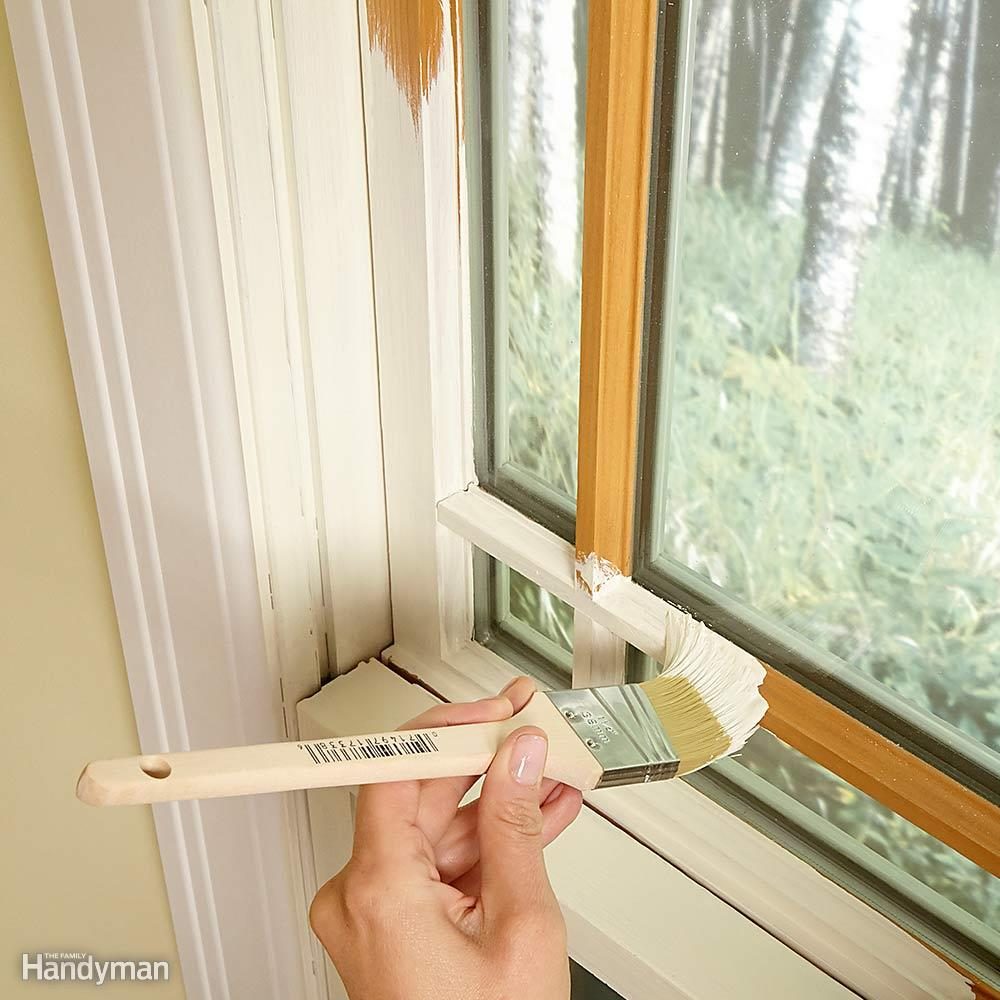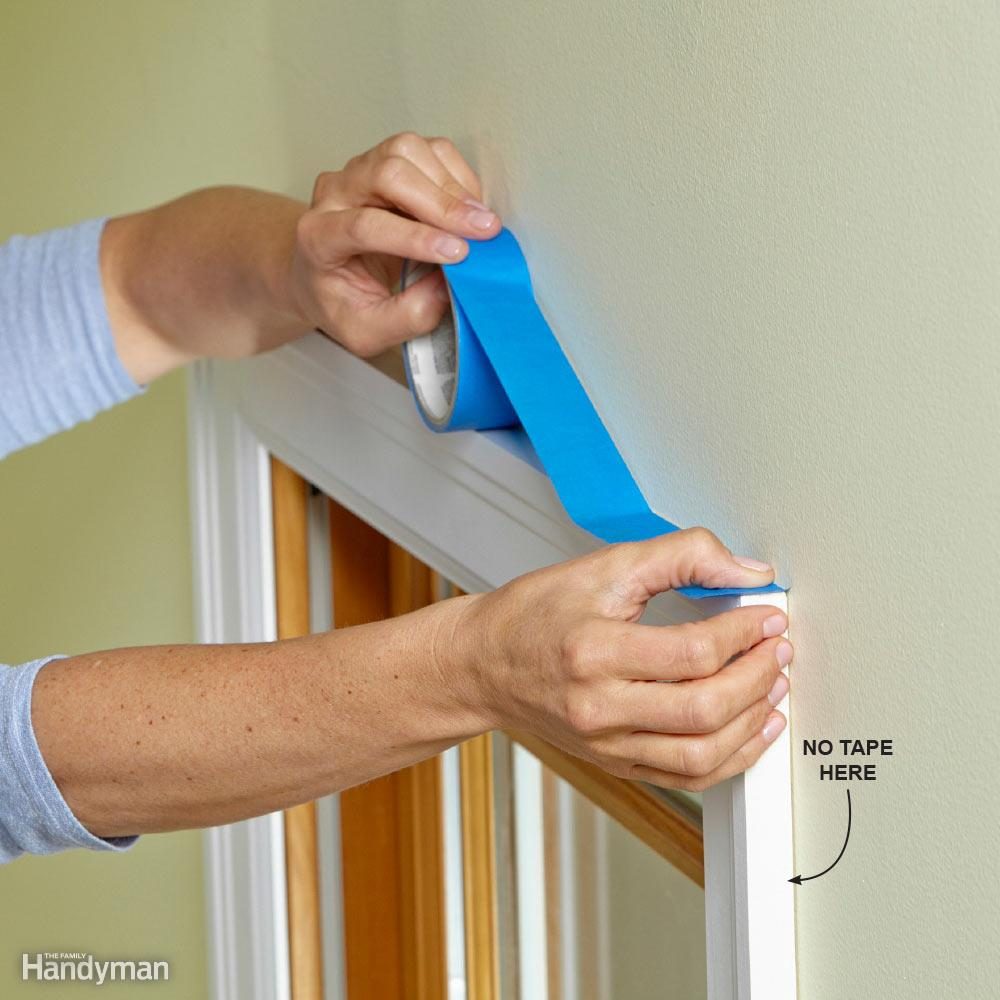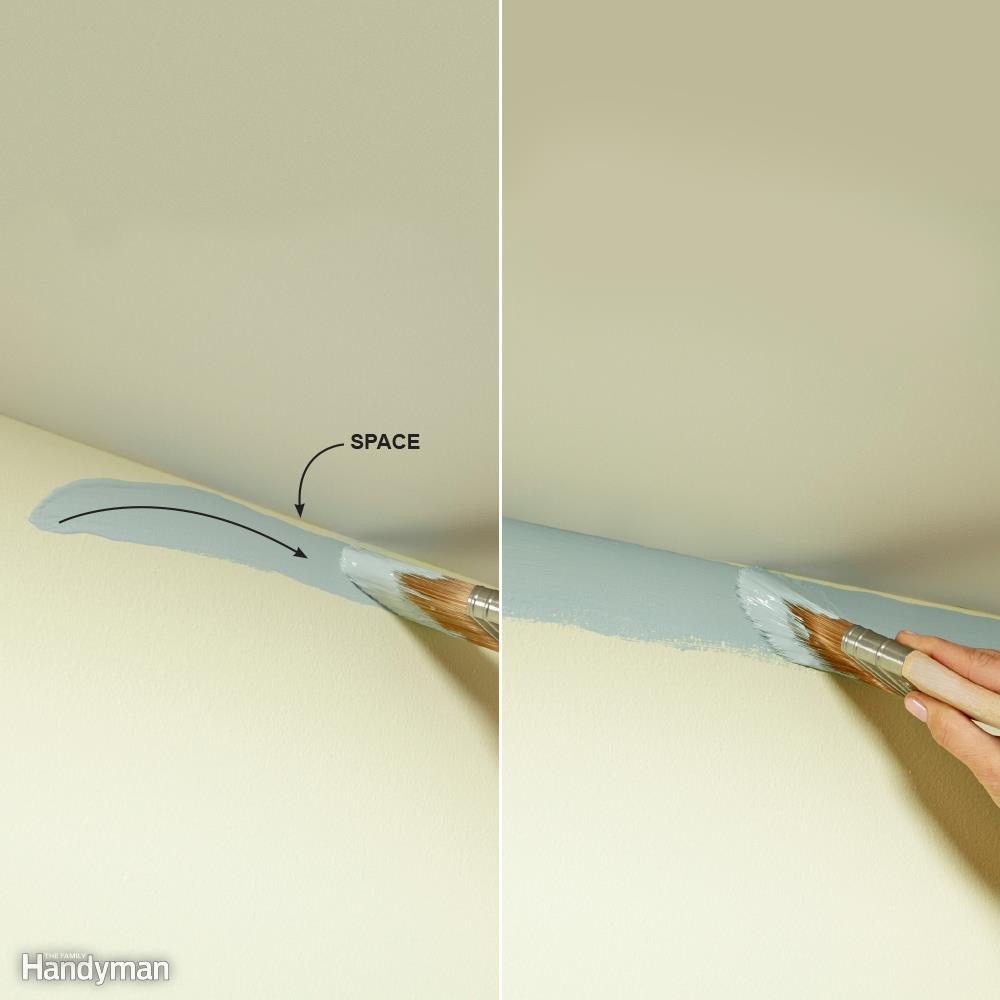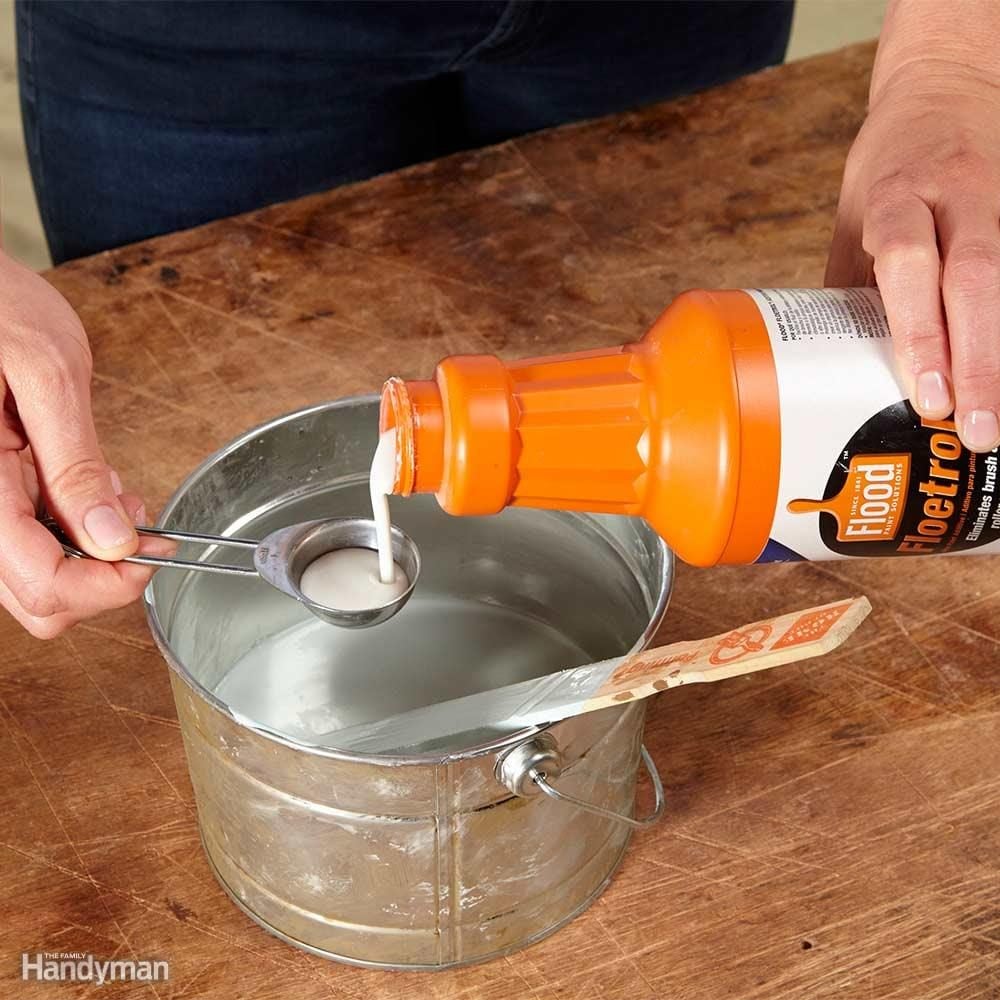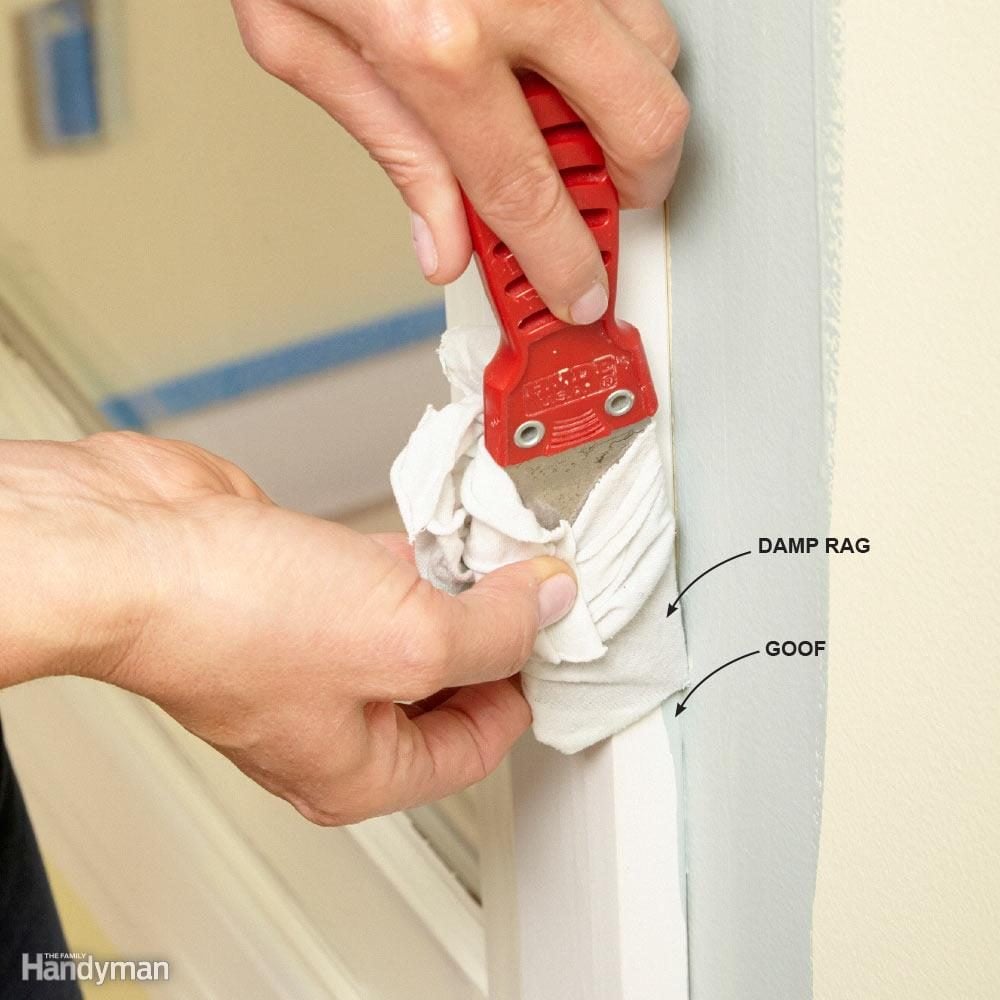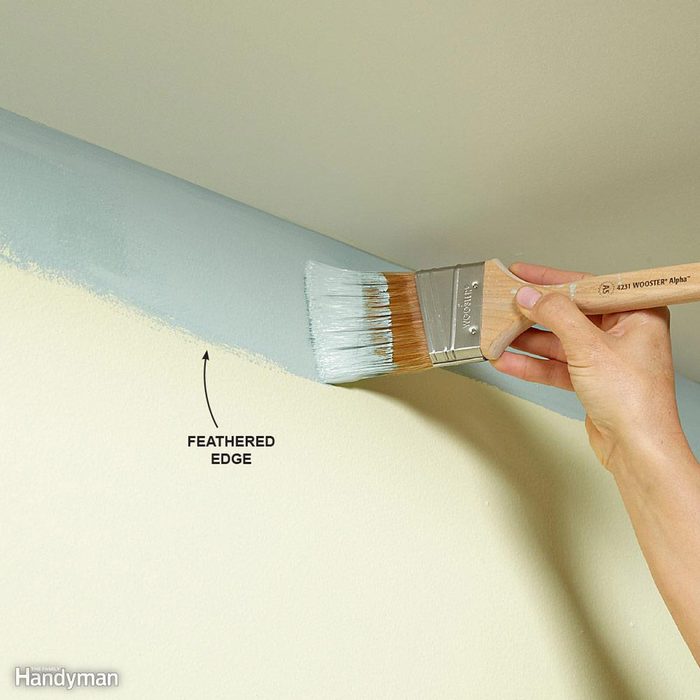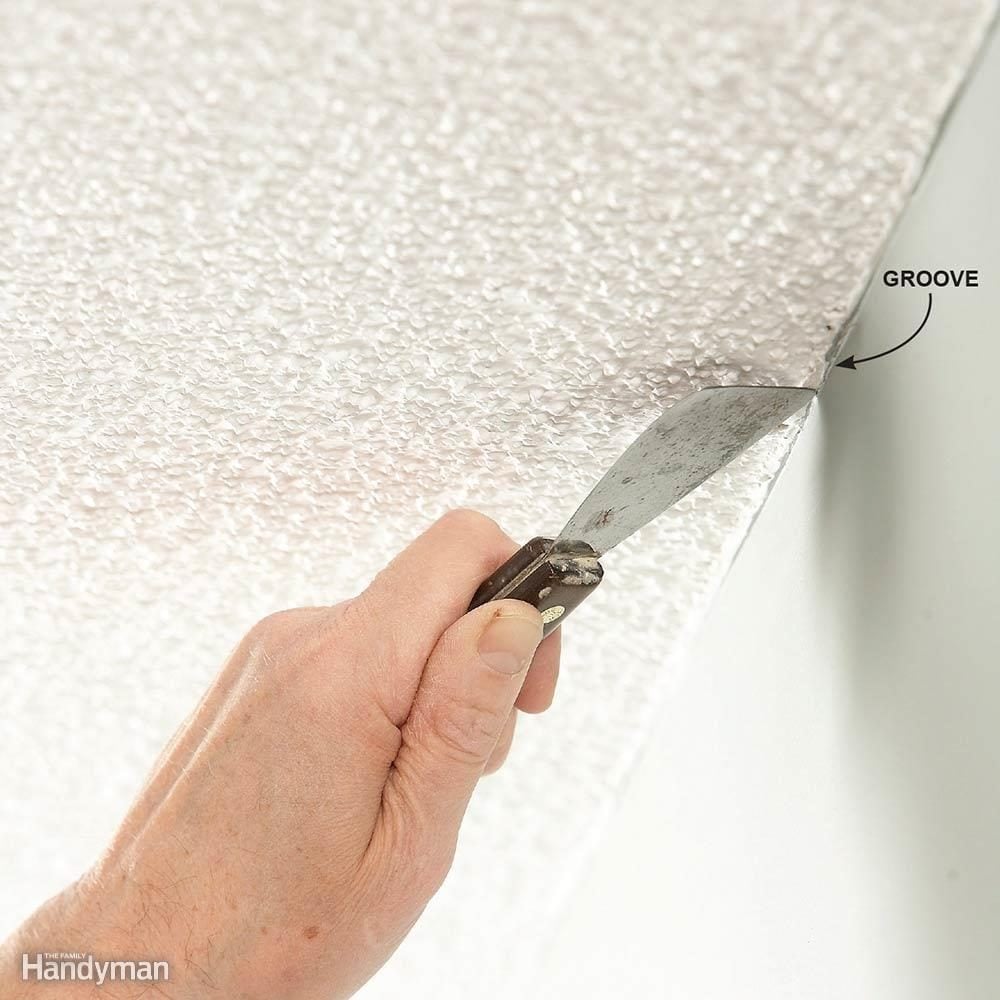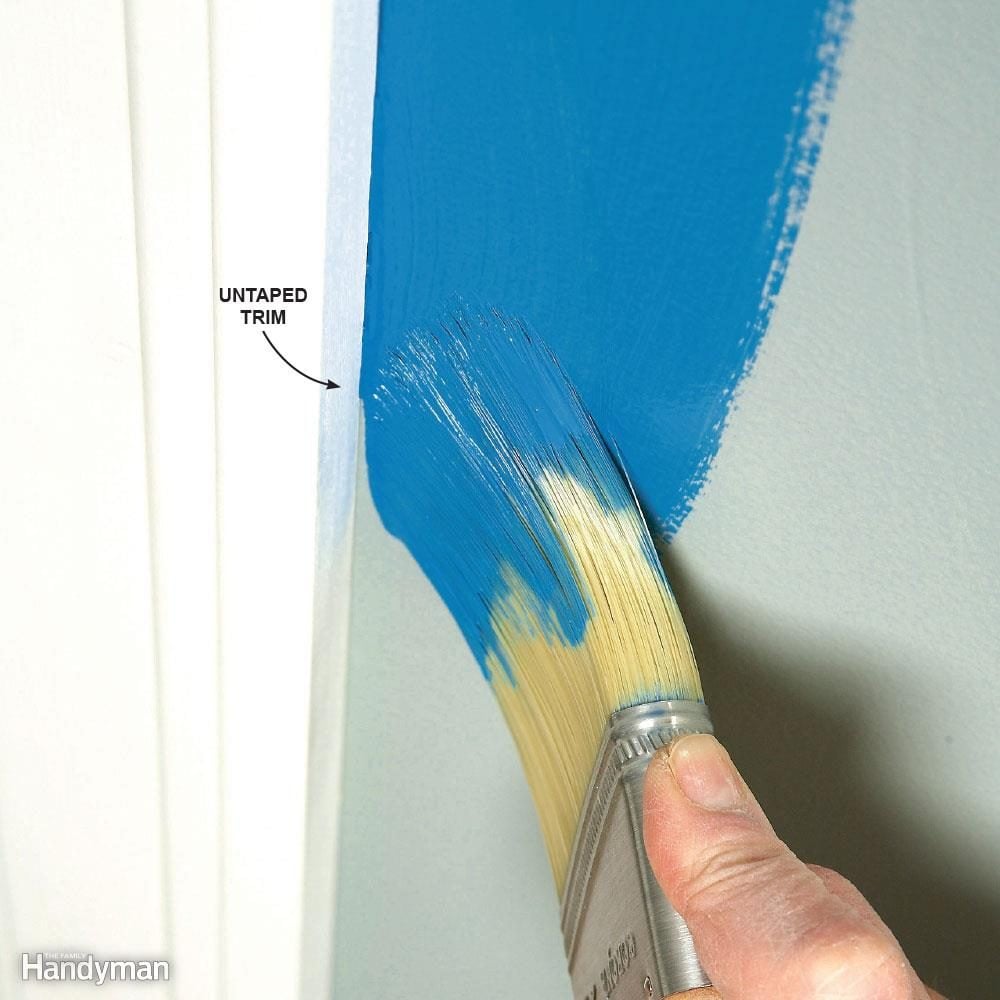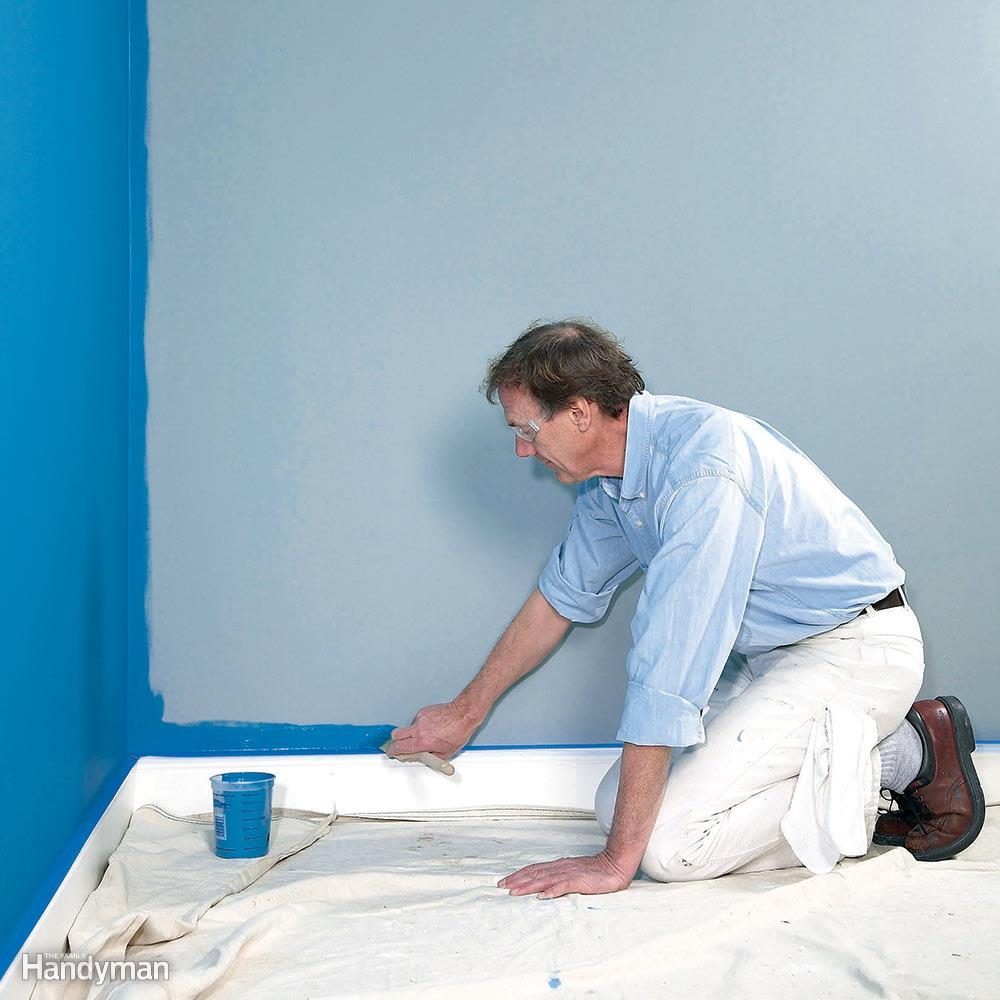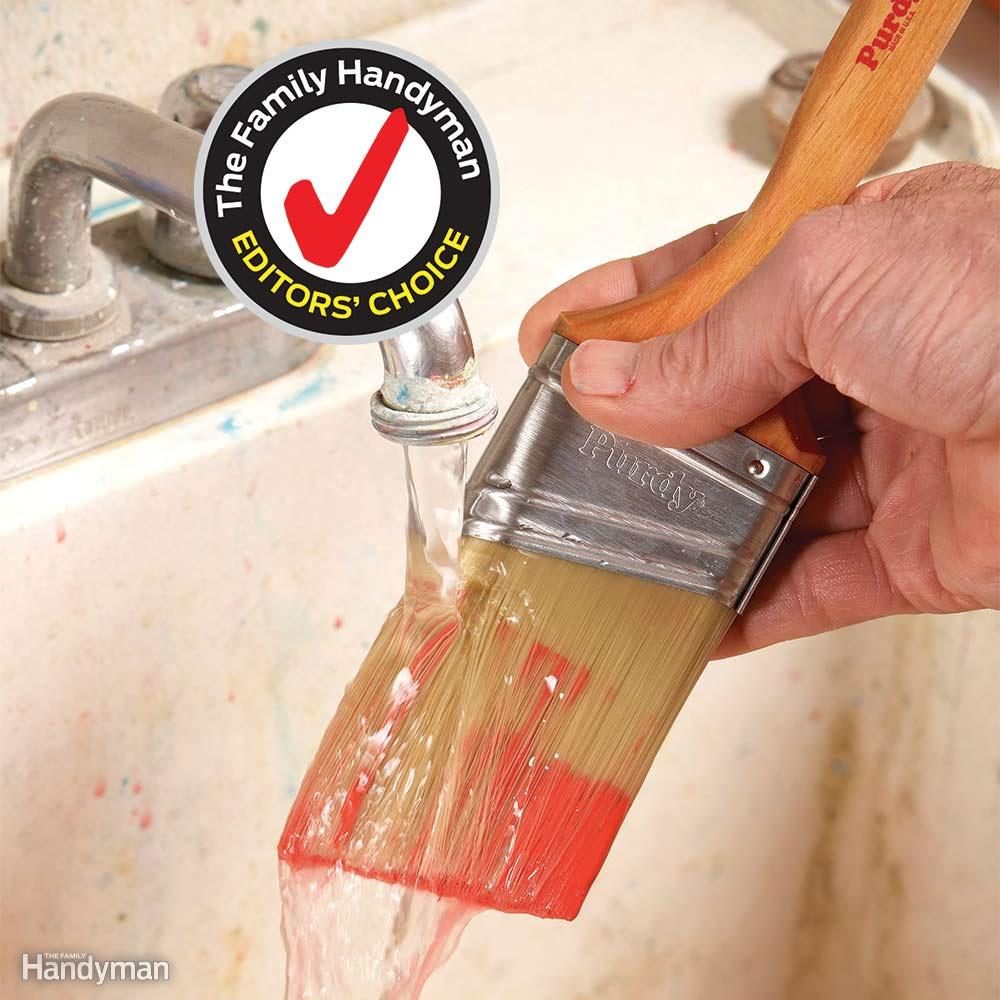Use a Dipping Pail
Rather than dipping your brush into the gallon can the paint comes in, transfer a small amount to a dipping pail. A dipping pail is an essential tool for painting. Pour only about an inch of paint into the pail. A small amount of paint prevents dipping your brush too deep, reduces weight and expedites cleanup if you spill the paint. You can buy special plastic paint pails with handles built in or a metal one like the one shown here. An empty paint can with the rim removed also makes a great dipping pail. You can remove the rim with a kitchen can opener.
Pat Your Brush on the Pail
Dipping the paintbrush and then wiping off the paint on the edge of a bucket is a common practice, but it’s not very efficient or a good painting technique. It’s better to leave more paint on the brush by dipping the bristles about an inch into the paint and then just patting the brush against opposite sides of the pail. With that amount of paint on the brush, you’ll be able to cover more surface before you need to reload.
Wiggle the Brush Into Corners
Wiggling the brush a little bit is good trick for painting corners as it helps the paint release into tight corners. Wiggling the brush is also a good technique for filling in missed areas as you make a second pass. Don’t wiggle too hard. Just a little vibration is all that’s needed to get great results.
Mask Only the Tops of Trim
When you master cutting in, you need to apply painter’s tape to only the tops of windows, doors and the baseboard. And the only reason you do this is to avoid spattering the woodwork when you roll paint onto the walls. Painting without tape less saves you time and money, and you don’t have to worry about paint creeping under the tape or the paint job getting messed up when you pull off the tape.
Buy a Good-Quality, Angled Sash Brush
We’ve seen many pro painters cut in perfectly with a big square-edge brush, but for most people, angled sash brushes, like the ones shown here, are easier to control. A good angled brush will make choosing the right paint brush an easy task. You can fan the angled tips out to get a fine line of paint, and the angle makes it easier to get into corners. A 2-1/2-in.-wide brush is about right for most interior room painting. But if you’re painting windows or other small woodwork, buy a smaller brush too. It’s easier to paint accurately with a smaller brush.
Get in a Good Position with Bright Light
To paint an accurate cut-in line, you have to get your body into a position where you can see the line clearly, and you need bright light. One of our Field Editors sent us this tip—to use a a good quality headlamp—and it really helps. For cutting in along the ceiling, get your head close to the ceiling for the best view of the cut-in line.
Work Up to the Line
When cutting in against a ceiling, molding or other surface where a straight line is required, start by sweeping into the line to unload some paint onto the wall. Don’t worry about getting close on the first pass. Without reloading your brush, make a second pass to coax the paint closer to the line. Fan the bristles so you’re using the tip of the taper to spread the paint in a straight line. You may even have to make a third pass to get a perfectly straight cut-in line.
Mix in Conditioner for Easier Brushing
Paint pros we talked to recommended adding conditioner to the water-based paint you’ll use to cut in. Ask at the paint store for paint conditioner or paint extender. Either one will work. Our paint consultant just dumps a little bit into the paint pail each time he refills and then mixes it up. But if you want to measure, we recommend about one tablespoon per cup of paint. The conditioner helps the paint flow easier, which in turn makes it easier to apply the paint in a nice crisp line.
Wipe Off Mistakes
Even pros occasionally get paint where they don’t want it. One method of cleaning up goofs is to wrap a damp rag around a putty knife. Make sure the cloth is only one layer thick for the most accurate cleanup. Then carefully slide the putty knife along your goof to wipe it off. You have to do this right away, though. Once the paint starts to dry, you’ll have to use more aggressive measures.
Feather the Edge
When you’re happy with the cut-in line, finish up by feathering or thinning the edge. Without reloading the brush, drag the tips of the bristles lightly over the outside edge to spread the paint in a thin layer and get rid of any ridges or paint buildup. This painting hack helps ensure that your cut-in paint won’t show as a stripe after you roll paint onto the walls.
Groove Textured Ceilings
It’s almost impossible to paint right next to rough-textured ceilings (a process called ‘cutting in’) without getting paint on the ceiling. Taping off the ceiling doesn’t work either. The solution? Knock off the texture at the edge with a putty knife. Hold the knife at a 45-degree angle to the wall and run the blade along the edge of the ceiling. The blade scrapes away the texture and leaves a small groove in the ceiling. Clean out the groove with a duster or a dry paintbrush.
Now when you cut in along the top of the wall, the paintbrush bristles will slide into the groove, giving you a crisp paint line without getting paint on the ceiling. And you’ll never notice the thin line of missing texture.
Cut in Quickly With a Steady Hand
Cutting in along trim that’s not protected by masking tape takes a steady hand. And once you get the knack for it, you’ll never want to fuss with taping trim again. Sure, cutting in can be hard for some DIYers, but you can learn to do it effectively and learn how to paint without tape.
Use a tapered paintbrush. The angled bristles uniformly unload the paint as you cut in. Dip the brush into the paint, then tap (don’t wipe) each side against your container to knock off the excess. Brush the paint on the wall, about 1/2 in. from the trim. Then make a second pass, cutting in all the way to the trim. Avoid ‘pushing’ the paint with your bristles or you’ll leave a ridge where you’re cutting in. Apply just enough pressure to let the bristle ends glide next to the trim. To help keep the brush steady, move your entire arm as you paint instead of moving your arm only from the elbow down.
Cut in One Wall at a Time
Once you have your paintbrush in hand, it’s tempting to cut in along all the trim, the ceiling and the corners in the room. But you’ll get better results if you cut in just one wall, then immediately roll out the wall before cutting in the next one. That’s because if you roll out the wall right away, while the cut-in paint is still wet, the cut-in paint and the wall paint will blend much better, reducing the chance of lap marks.
Use a Mini Hand Masker
We’ve tried all kinds of masking tape dispensers and painting tools. But for a simple, affordable way to speed up your masking, it’s hard to beat this little applicator from Scotch. After you get a few inches of tape stuck down, hold the dispenser against the surface you’re masking and slide it along the wall. Wheels press the tape to the surface, and a built-in cutter slices it off at the end of the run. We applied a straight, accurate line of masking tape along the moldings in this room in record time. The 3M ScotchBlue Painter’s Tape Applicator is easily refillable.
Use an Easy-Clean Chinex Brush
The editors here love Chinex bristle paintbrushes. But it’s not just us — our set builder doesn’t use anything else, and the pros we talked with agree that paintbrushes made with Chinex bristles are nearly perfect. They work equally well for oil-base and water-base paints.
But the best feature of Chinex bristles is how easy they are to clean. Many of the new formulations of water-base paint dry quickly and stick tenaciously to other types of synthetic bristles, leaving you with a tough cleanup job. Chinex bristles solve this problem. Paint rinses out easily, giving you a brush that’s “like-new” clean. Corona, Wooster and Purdy make brushes with Chinex bristles.
Use a Better Edge-Painting Tool
If you don’t paint every day, “cutting-in” a room can be frustrating. It’s no wonder there have been so many attempts over the years to make a tool that simplifies the task. The Accubrush edge-painting tool is one of the best we’ve tried. It makes cutting-in quick and easy. With just a little practice, you can paint perfectly straight lines along ceilings and moldings. You’ll still have to finish some areas with a brush, though, since the tool can’t paint right up to adjacent edges. Connect a pole to the ceiling-edging tool and you can paint along the ceiling without even getting on a ladder. Get it on Amazon today.

